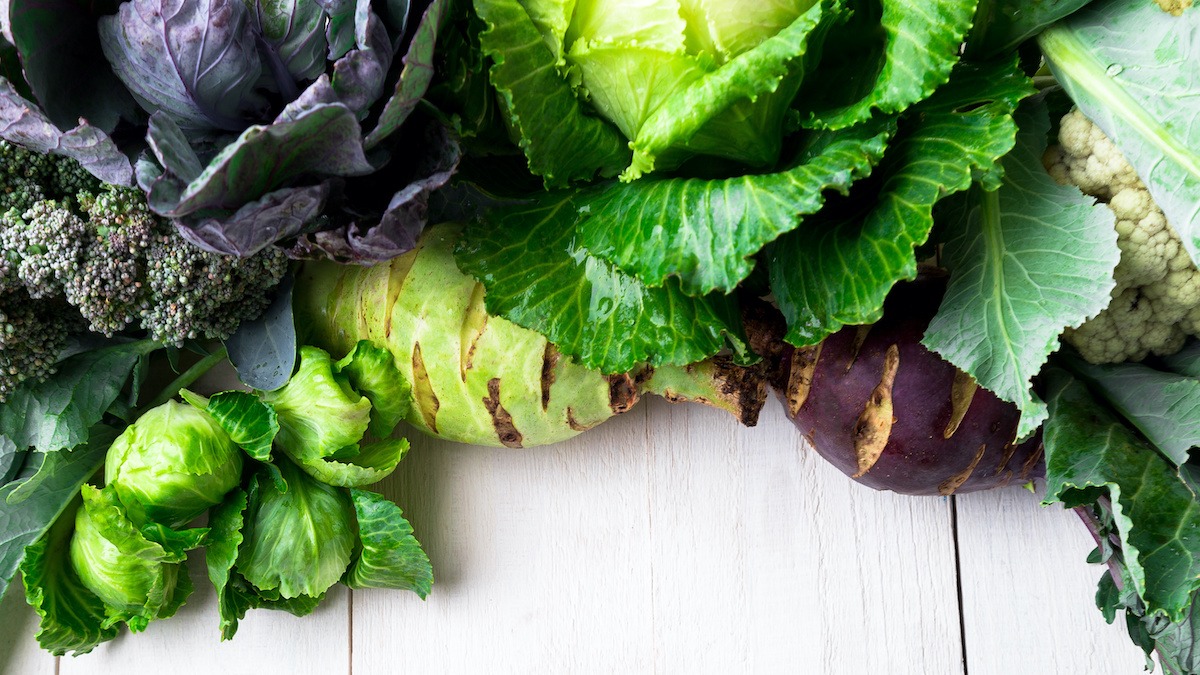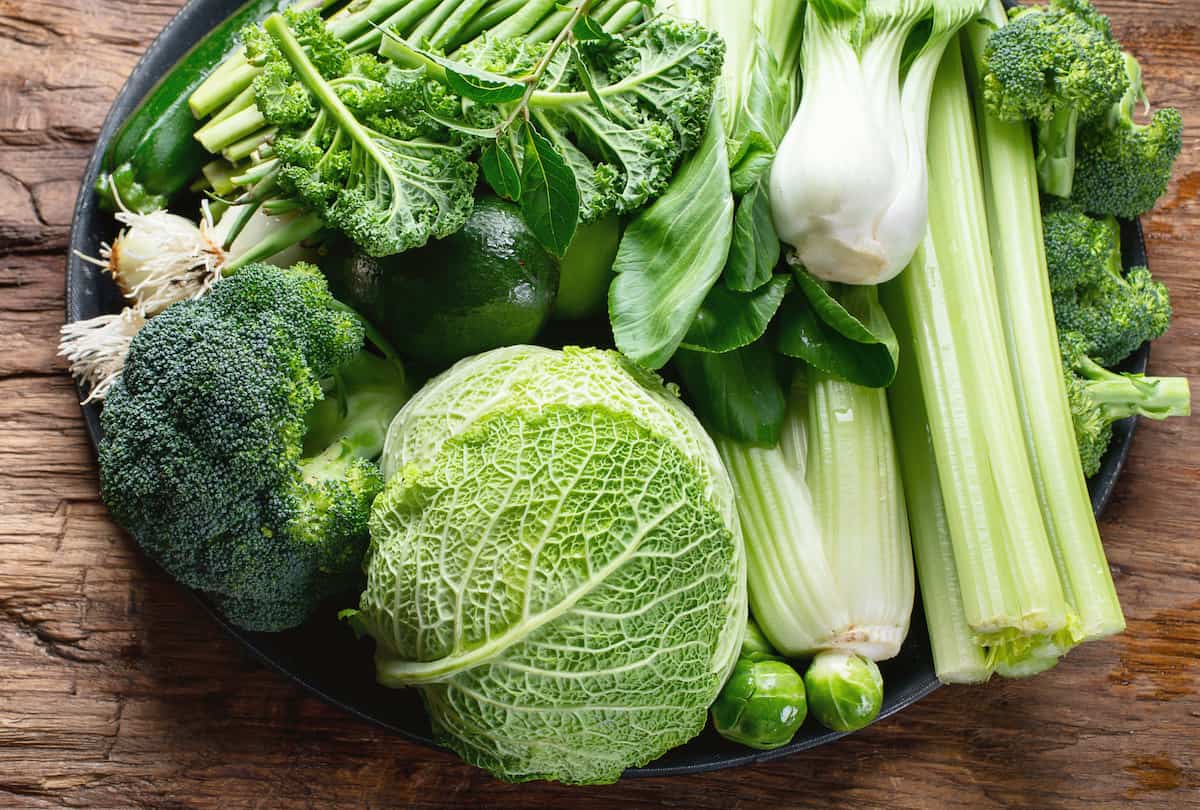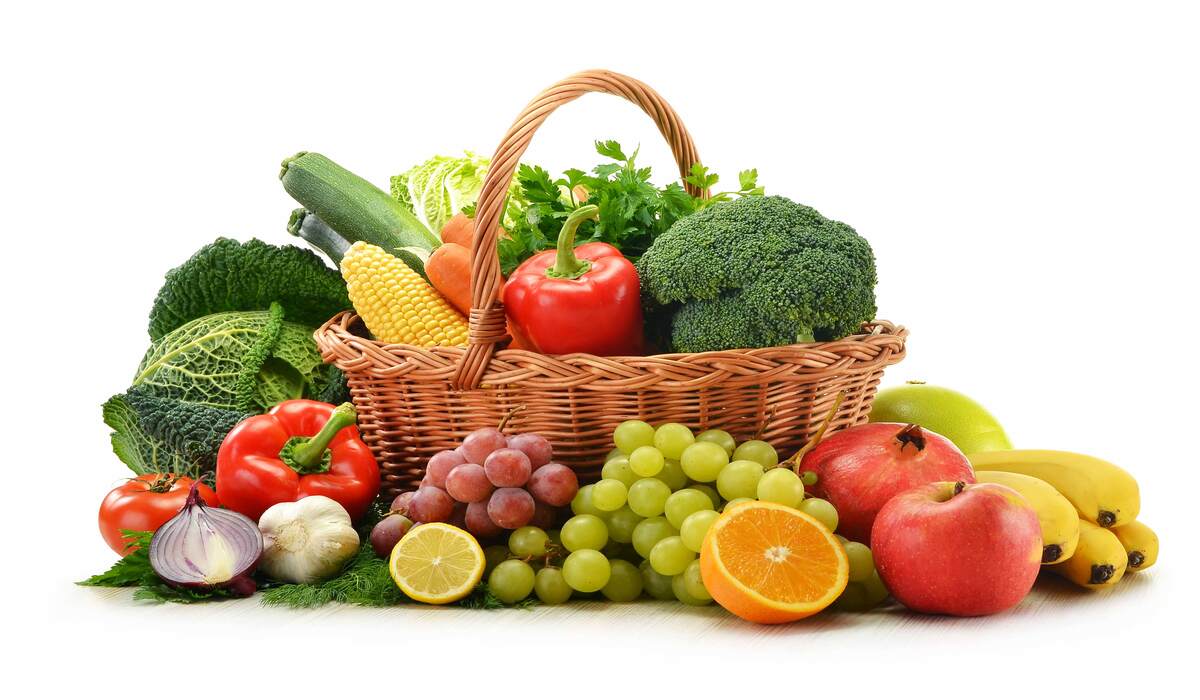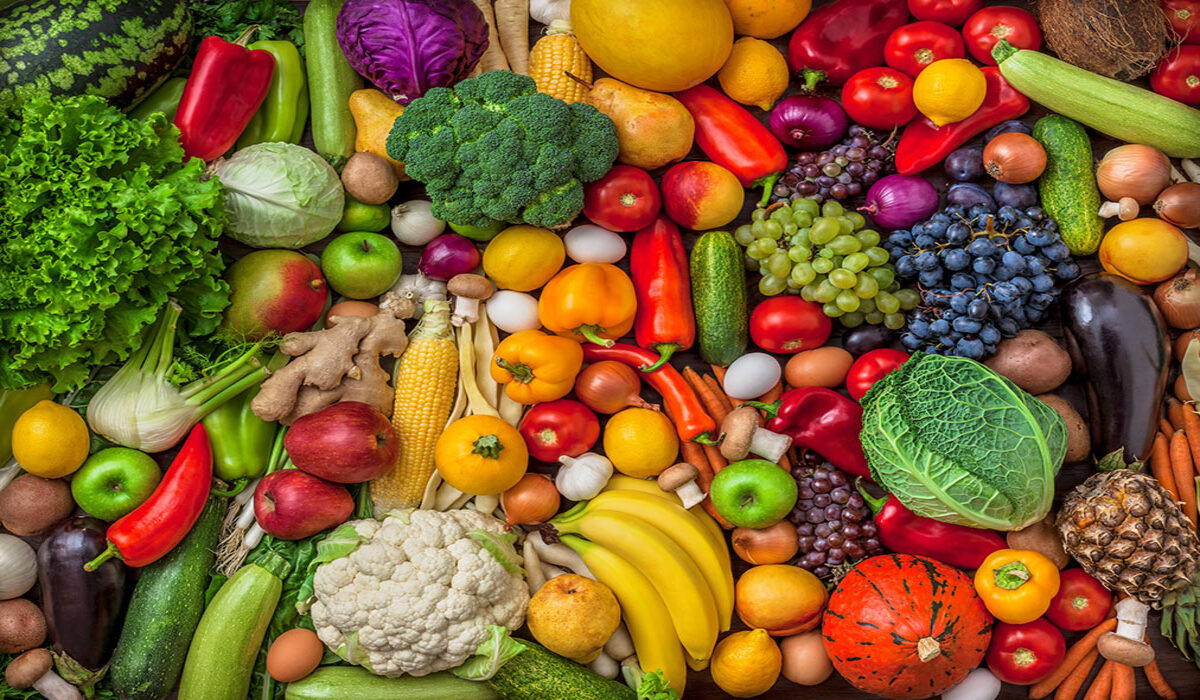Home>Types of Gardening>Edible Gardening>What Are High Glycemic Vegetables


Edible Gardening
What Are High Glycemic Vegetables
Modified: January 22, 2024
Learn about high glycemic vegetables and their impact on blood sugar levels. Get expert tips on edible gardening and growing these veggies.
(Many of the links in this article redirect to a specific reviewed product. Your purchase of these products through affiliate links helps to generate commission for Chicagolandgardening.com, at no extra cost. Learn more)
Table of Contents
Introduction
Welcome to the fascinating world of edible gardening! Whether you have a sprawling backyard or just a small balcony, growing your own food is a rewarding and fulfilling experience. Edible gardening not only allows you to have access to fresh, organic produce right at your doorstep but also provides a sense of accomplishment and connection to nature.
Imagine stepping outside and plucking a juicy tomato from the vine or harvesting a handful of crisp lettuce leaves for a garden-fresh salad. Edible gardening gives you the power to control what goes into your food, ensuring that you consume nourishing and pesticide-free fruits and vegetables.
In this article, we will delve into the world of high glycemic vegetables and their impact on your blood sugar levels. Understanding the glycemic index of different foods is crucial for maintaining a healthy diet, especially for individuals with conditions like diabetes or those looking to manage their weight.
The glycemic index (GI) is a ranking system used to measure how quickly carbohydrates in food raise blood sugar levels. Foods with a high glycemic index are rapidly digested and cause a rapid spike in blood glucose levels, while foods with a low glycemic index are digested more slowly, resulting in a gradual rise in blood sugar.
High glycemic vegetables refer to those that have a higher glycemic index value compared to other vegetables. Consuming these vegetables can lead to a quicker increase in blood sugar levels, which may not be ideal for individuals with diabetes or those trying to maintain stable blood sugar levels.
In the following sections, we will explore a comprehensive list of high glycemic vegetables and discuss the potential health risks associated with their consumption. But don’t worry—if you love these veggies, we will also provide tips on how to include them in a healthy diet without compromising your nutritional goals.
So, let’s dive into the world of high glycemic vegetables and learn how to make informed choices when it comes to our edible gardening journey!
Understanding Glycemic Index
The concept of the glycemic index (GI) is a valuable tool in understanding how different foods affect our blood sugar levels. It measures the rate at which carbohydrates in a particular food are digested and converted into glucose, subsequently raising blood sugar levels.
The glycemic index is expressed as a numerical value that ranks foods on a scale from 0 to 100. Foods with a high GI (above 70) are rapidly digested and cause a quick spike in blood sugar levels, while foods with a low GI (below 55) are digested more slowly, resulting in a slower and more gradual rise in blood glucose levels.
Understanding the glycemic index can be particularly beneficial for individuals with diabetes or those looking to manage their weight. It allows them to make informed choices about the types of carbohydrates they consume, aiming for a more gradual release of glucose into the bloodstream to avoid sudden spikes in blood sugar.
Factors that contribute to the glycemic index of a food include the type of carbohydrate present, the fiber content, and the food’s preparation or cooking method. Foods with a higher fiber content or those that undergo minimal processing tend to have a lower glycemic index.
It’s important to note that consuming foods solely based on their GI value may not provide a complete picture of their impact on blood sugar levels. The glycemic load (GL) takes into account both the GI and the quantity of carbohydrates in a particular food. This provides a more accurate representation of the overall effect on blood sugar levels.
Managing blood sugar levels is crucial for individuals with diabetes, as well as for overall health and wellbeing. A diet rich in low to moderate glycemic index foods can help maintain stable blood sugar levels, provide sustained energy throughout the day, and contribute to weight management.
In the next section, we will focus on high glycemic vegetables and their specific impact on blood sugar levels. Understanding the glycemic index of vegetables will enable us to make informed choices when it comes to incorporating these foods into our diet without compromising our health goals.
High Glycemic Vegetables: Definition and Impact on Blood Sugar
High glycemic vegetables refer to those vegetables that have a higher glycemic index value compared to other vegetables. These vegetables are digested quickly, causing a rapid rise in blood sugar levels after consumption.
When we consume high glycemic vegetables, the carbohydrates they contain are broken down and converted into glucose more rapidly, leading to a sharp increase in blood sugar. This spike in blood sugar can be problematic for individuals with diabetes or those trying to maintain stable blood sugar levels.
Some common examples of high glycemic vegetables include potatoes, parsnips, beets, and carrots. These vegetables have higher levels of starch and carbohydrates compared to other vegetables, which contributes to their higher glycemic index values.
However, it’s important to note that the impact of high glycemic vegetables on blood sugar can vary from person to person. Factors such as cooking methods, portion sizes, and overall dietary context can influence how these vegetables impact blood sugar levels.
For individuals with diabetes, it is generally recommended to consume a balanced diet that includes a variety of vegetables, including both low and high glycemic options. However, it is crucial to monitor blood sugar levels and work with a healthcare professional or a registered dietitian to develop a personalized nutrition plan.
Individuals who are not managing diabetes but are concerned about blood sugar management can also benefit from being mindful of high glycemic vegetables. Incorporating a mix of low glycemic vegetables and high glycemic vegetables in a meal can help slow down the digestion and absorption of carbohydrates, leading to a more balanced release of glucose into the bloodstream.
It’s important to remember that while high glycemic vegetables can cause a rapid increase in blood sugar levels, they still provide valuable nutrients, vitamins, and minerals. Moderation and portion control are key when including high glycemic vegetables in your diet while considering overall blood sugar management.
In the next section, we will provide a comprehensive list of high glycemic vegetables to help you make informed choices when planning your meals and incorporating these vegetables into your diet.
List of High Glycemic Vegetables
When it comes to high glycemic vegetables, it’s essential to be aware of the varieties that can potentially cause a rapid increase in blood sugar levels. Here is a list of some common high glycemic vegetables:
- Potatoes: Whether they are white potatoes, red potatoes, or sweet potatoes, all varieties have a relatively high glycemic index. This is because they are rich in starch and carbohydrates.
- Parsnips: These root vegetables have a sweet and nutty flavor, but they also have a higher glycemic index compared to other vegetables. Enjoy them in moderation to manage blood sugar levels.
- Beets: Although beets are known for their vibrant color and nutrient profile, they have a moderate to high glycemic index due to their natural sugars.
- Carrots: Carrots are packed with beta-carotene and other beneficial nutrients, but they also have a higher glycemic index. Include them in your diet, but be mindful of portion sizes.
- Corn: While technically classified as a grain, corn is often grouped with vegetables in culinary contexts. It has a relatively high glycemic index due to its natural sugars.
- Pumpkin: Similar to other starchy vegetables, pumpkin can have a higher glycemic index. However, it is still a nutritious and delicious addition to your meals when eaten in moderation.
It’s important to note that the glycemic index values of these vegetables can vary based on factors such as cooking methods and ripeness. Boiling or steaming vegetables tends to have a lower glycemic impact compared to baking or frying.
While these vegetables are considered high glycemic, they still offer valuable nutrients and have a place in a balanced diet. The key is to manage portion sizes and pair them with lower glycemic index foods, such as non-starchy vegetables and proteins, to help slow down the absorption of carbohydrates.
Remember, individual responses to high glycemic vegetables may vary, so it’s crucial to monitor your blood sugar levels and work with a healthcare professional or registered dietitian to personalize your dietary approach.
In the next section, we will discuss the health risks associated with high glycemic vegetables and the importance of overall blood sugar management.
Health Risks Associated with High Glycemic Vegetables
While high glycemic vegetables can provide important nutrients, it’s crucial to be aware of the potential health risks associated with their consumption, especially for individuals with diabetes or those aiming to manage blood sugar levels.
One of the primary concerns with high glycemic vegetables is their ability to cause a rapid increase in blood sugar levels. This can be problematic for individuals with diabetes as their bodies struggle to properly regulate blood glucose. Consistently high blood sugar levels can lead to long-term complications such as cardiovascular disease, nerve damage, kidney problems, and eye damage.
Moreover, consuming high glycemic vegetables in excessive amounts can also contribute to weight gain and make weight management more challenging. Foods that quickly raise blood sugar levels can lead to cravings, hunger pangs, and a cycle of overeating. This can hinder weight loss efforts and increase the risk of obesity and associated health conditions.
However, it’s important to note that the overall impact of high glycemic vegetables on health depends on several factors, including individual metabolism, overall diet quality, and portion sizes. Every person’s response to high glycemic foods can vary, and it’s essential to monitor blood sugar levels and work with healthcare professionals to tailor dietary recommendations to individual needs.
Managing the consumption of high glycemic vegetables can be approached in several ways. One strategy is to combine them with low glycemic index foods in a balanced meal. Pairing high glycemic vegetables with sources of protein, healthy fats, and fiber-rich foods can help slow down the digestion and absorption of carbohydrates, reducing the impact on blood sugar levels.
Additionally, preparing high glycemic vegetables using cooking methods that have a lower glycemic impact, such as boiling or steaming, can also help manage blood sugar response. These methods preserve the natural fiber content, which slows down digestion and helps stabilize blood sugar levels.
It’s important to remember that everyone’s nutritional needs and health goals are unique. Working with a registered dietitian or healthcare professional can provide personalized guidance on how high glycemic vegetables fit into an individual’s overall dietary approach.
In the next section, we will explore ways to include high glycemic vegetables in a healthy diet without compromising blood sugar management.
Ways to Include High Glycemic Vegetables in a Healthy Diet
Although high glycemic vegetables may raise concerns for individuals managing blood sugar levels, there are ways to incorporate them into a healthy diet without compromising overall health goals. Here are some strategies to consider:
1. Portion control: Pay attention to portion sizes when consuming high glycemic vegetables. Instead of indulging in large quantities, focus on moderation and balance. Pair them with lower glycemic index foods and include a variety of non-starchy vegetables to create a well-rounded meal.
2. Cooking methods: Choose cooking methods that have a lower impact on blood sugar response. Steaming, boiling, or stir-frying high glycemic vegetables can help preserve their fiber content and slow down digestion. Avoid deep-frying or excessive use of oils and fats.
3. Pairing with protein and healthy fats: Combining high glycemic vegetables with sources of protein and healthy fats can help regulate blood sugar levels and create a balanced meal. Add lean meats, poultry, fish, tofu, or legumes to your high glycemic vegetable dishes to slow down the absorption of carbohydrates.
4. Add fiber-rich foods: Incorporate fiber-rich foods into your meals to help slow down the digestion and absorption of carbohydrates. Include whole grains, seeds, nuts, and other non-starchy vegetables alongside high glycemic vegetables. Fiber promotes satiety and can help regulate blood sugar levels.
5. Mindful eating: Practice mindful eating by paying attention to hunger and fullness cues. Slow down and savor the flavors of your meals, allowing yourself to truly enjoy the experience. This can help prevent overconsumption and promote a healthier relationship with food.
6. Consider glycemic load: While the glycemic index provides insights into how quickly a food affects blood sugar, it is also essential to consider the glycemic load. The glycemic load takes into account not only the glycemic index but also the portion size of a specific food. This can provide a more accurate understanding of the impact on blood sugar levels.
7. Regular blood sugar monitoring: It’s crucial to regularly monitor blood sugar levels, especially for individuals with diabetes or those with specific health concerns. Keeping track of your levels will help you determine how different foods, including high glycemic vegetables, affect your body and allow for adjustments in your dietary approach.
Remember, incorporating high glycemic vegetables into a healthy diet is about finding the right balance. By practicing portion control, choosing appropriate cooking methods, and combining them with other nutrient-dense foods, you can enjoy their flavors and benefits without compromising your health goals.
It’s always recommended to consult with a registered dietitian or healthcare professional to individualize dietary recommendations based on your specific needs and health status.
In the next section, we will wrap up our exploration of high glycemic vegetables and the considerations to keep in mind when incorporating them into your edible gardening journey.
Conclusion
In the world of edible gardening, understanding the concept of high glycemic vegetables is crucial for maintaining a healthy diet, especially for individuals with diabetes or those looking to manage their blood sugar levels. High glycemic vegetables refer to those that have a higher glycemic index value compared to other vegetables, causing a rapid rise in blood sugar levels after consumption.
While high glycemic vegetables can pose potential risks, such as blood sugar spikes and challenges in weight management, there are ways to incorporate them into a healthy diet. Portion control, choosing appropriate cooking methods, and pairing them with other nutrient-dense foods can help manage the impact on blood sugar levels and create a balanced meal.
It’s important to remember that every individual’s response to high glycemic vegetables may vary, and it’s essential to monitor blood sugar levels and work with healthcare professionals or registered dietitians to personalize dietary recommendations based on individual needs.
Edible gardening provides an excellent opportunity to cultivate a variety of vegetables, including both low and high glycemic options. By growing your own food, you have the power to control what goes into your meals and ensure you have access to fresh, organic produce.
Whether it’s plucking a juicy tomato, harvesting crisp lettuce leaves, or enjoying the earthy flavors of root vegetables, edible gardening allows you to connect with nature and experience the joy of growing your own food. Combining high glycemic vegetables with a variety of other vegetables, proteins, healthy fats, and fiber-rich foods can help create a well-rounded and nutritious diet.
Remember to be mindful of portion sizes, cooking methods, and your overall dietary context when incorporating high glycemic vegetables into your meals. Regularly monitoring blood sugar levels and seeking guidance from healthcare professionals will ensure that you are making informed choices for your health and wellbeing.
So, whether you’re embarking on a new gardening adventure or expanding your existing edible garden, embrace the diversity of vegetables, including high glycemic options, while keeping your health goals in mind. Enjoy the flavors, nourishment, and satisfaction that edible gardening brings to your plate!










